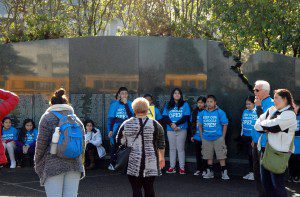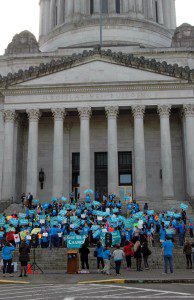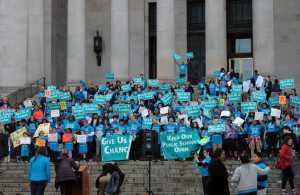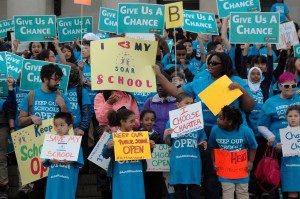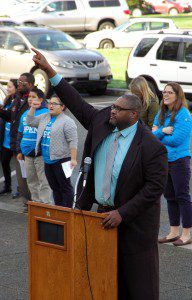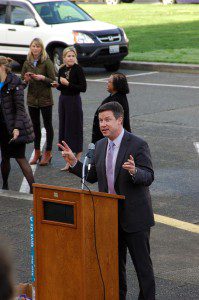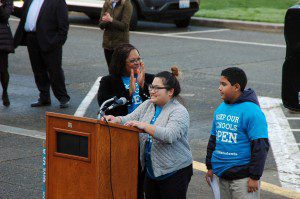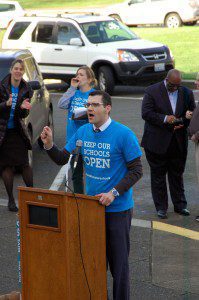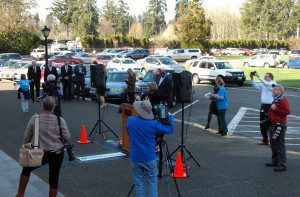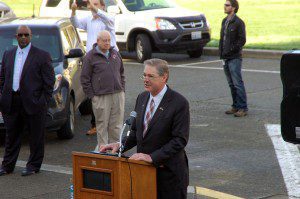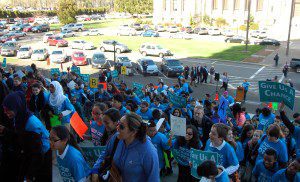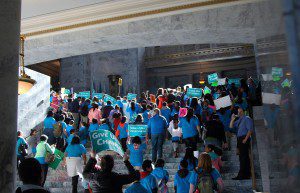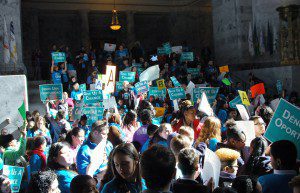The Opportunity Gap Bill is now Law!
Today Gov. Jay Inslee signed House Bill 1541, which addresses the Opportunity Gap. Here are highlights from the ceremony at Aki Kurose Middle School library.

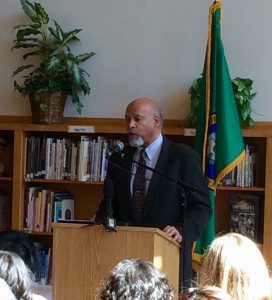
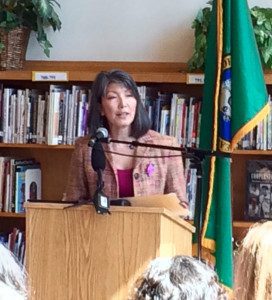
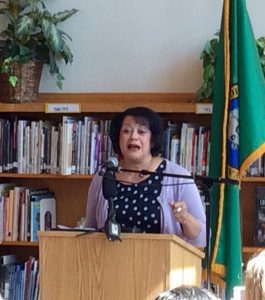
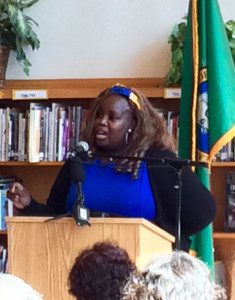
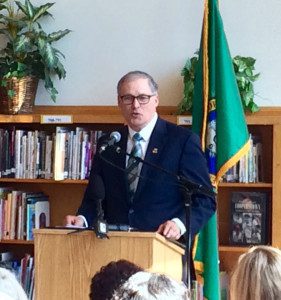

Building a quality public education system from cradle to career.
Today Gov. Jay Inslee signed House Bill 1541, which addresses the Opportunity Gap. Here are highlights from the ceremony at Aki Kurose Middle School library.







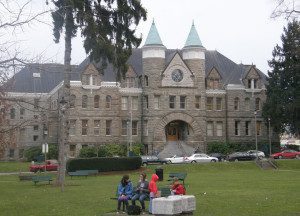
Candidates who want to lead Washington’s school system as its next superintendent will speak at forums around the state. If you know of any other scheduled OSPI candidate forums, please email info to LEV Communications Director Arik Korman
OSPI candidates advancing to the general election November 8:
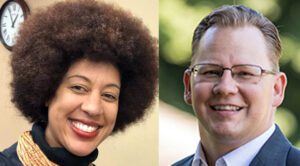
If you are unable to attend a live candidate forum, TVW will carry them. Info HERE
Watch the October 5th Woodinville candidate forum HERE
Note: The League of Education Voters is not promoting or endorsing either candidate.
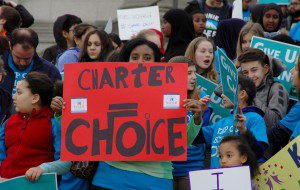
On March 9th, 2016, the House of Representatives amended and passed ESSB 6194, a new charter school law. On March 10th, 2016, the Senate concurred with the House’s changes and passed the bill. The bill now awaits Governor Inslee’s signature. The bill reenacts provisions of Initiative 1240 and makes changes to the charter school system to comply with the Supreme Court’s ruling on charter schools in September of 2015. This bill will allow the current schools to stay open and new schools to be established in the future, providing more options for Washington’s students and families.

|
|
|||||

Last night, the House voted 58-39 to pass Senate Bill 6194, a long-term solution to keep public charter schools open. The bill is off to the Senate for concurrence and then to Governor Inslee’s desk. Here are the legislators who voted yes, in case you would like to thank them:

Friends,
You know that I’m a fan of football and a huge fan of Seahawks coach Pete Carroll. His post-game victory speech almost always begins thus: “Do we win the game in the first quarter? (NO!) Do we win it in the second quarter? Do we win the game in the third quarter? No. We win the game in the fourth quarter.” Well folks, as it relates to the legislative session, we are firmly in the throes of the fourth quarter and fast approaching the two-minute warning.
With less than a week to go, much remains to be done. That list includes a fix for our charter schools, wildfires, a supplemental budget and myriad education issues. The one thing that has made it past the finish line is the McCleary task force bill that the Governor signed on Monday – the hope being that the task force satisfies the Supreme Court’s ruling requiring a plan for full funding. You can get more detail about the role of the task force here. All bill movement and descriptions can be found here.
Speaking of the budget, both budgets have passed their respective chambers (HB 2376 & SB 6246). Significant differences remain regarding the use of the Rainy Day Fund – the House is transferring $318 million from the Rainy Day Fund and the Senate is transferring $0. Required spending is eating up most of the additional revenue, leaving few resources to enhance or expand programs, which further complicates matters. The estimated additional required spending is expected to be approximately $360 million:
Session is set to expire at midnight Thursday and everyone wants to get out to start the campaign season. A special session isn’t out of the realm of possibility, but doesn’t fall into the realm of the desirable. What is desirable is final action on a handful of bills that made it out of the opposite chamber this week, including:
Here are bills that passed out of opposite chamber, but still have some differences to be worked out before getting to the Governor’s desk:
We are still in the thick of it on charter schools. Kids and parents have burned up the concrete turning out in Olympia and most mainstream media are in support of a fix. All attention is turned now to the House where the next action must be taken.
It’s looking less likely that we’ll get the funding fix we need for Career and Technical Education (CTE), unless a rabbit and a hat are part of the final budget negotiations. Which is a shame, because our kids need improved access to CTE – it is the bridge to the world after high school for many.
In other news:
Ok folks, that’s it for the week. But don’t turn away – next week will be past us in a heartbeat and there’s a LOT left to do. Enjoy your weekend, hug your children, and thanks for all you do for Washington’s kids.
Chris and Team LEV

The Senate and House came to an agreement on how to move forward in fulfilling their constitutional responsibility to fully fund education. The Legislature delivered Senate Bill 6195 (Rivers R-18, Rolfes D-23) to Gov. Inslee, which he signed into law on February 29. SB 6195 is the Legislature’s attempt to comply with the most recent order by the State Supreme Court in which the court found the Legislature in contempt for inadequate progress in funding basic education and complying with the McCleary decision. The Court levied a fine of $100,000 per day on the Legislature until there is a solution.
Learn about the process going forward and what the legislation does and doesn’t do.
For all the bills proposed this session, check out our 2016 Bill Tracker.

Darcelina Soloria met LEV Policy Director Amy Liu in October 2015 after Amy sent out public charter school information to parents. Darcelina was moved to take action and led a phone bank effort in December, organizing 15 people who each made 10 calls in a single night.
Since then, Darcelina has led 5 more phone bank events where she encouraged fellow volunteers to make 15 calls each time, urging legislators to support a fix for public charter schools.
Darcelina’s own public school education went without a hitch until high school, where she was able to pass algebra only because of help from a classmate. Her math teacher was emotionally unavailable and did not offer any extra support. She also did not know how to write a paper.
As you can imagine, Darcelina was paralyzed when she started community college. But thanks to instructors that were a better fit, she surprised herself by earning an A in English. She transferred to 4-year institution right out of community college and continued her upward learning trajectory with an A in English 101 out of the gate.
Darcelina realized her troubles in high school weren’t her fault – she just didn’t have the right teachers to match her learning style. Now she has an accounting degree.
Darcelina and her husband hadn’t planned on having children. When she found out she was pregnant with her son, it was a big surprise. She started thinking about educational options but lived in Hillyard, a Spokane neighborhood not associated with good public schools. And she couldn’t afford private school.
When looking at kindergarten prospects, Darcelina thought about Montessori but found Spokane International Academy, a public charter school that opened in Hillyard last year to help that historically underserved community. Darcelina applied and was thrilled when her son got in.
Darcelina appreciates the school’s focus in on kids and how they learn. She also is impressed by SIA Head of School Travis Franklin’s goal of helping students become community-minded and globally-oriented.
In kindergarten, her son is now speaking Spanish and writing papers. When he started, he was at pre-K level. By the time he gets to 8th grade, Darcelina believes he will have a clear understanding of how he can become a great citizen locally, statewide and globally.
Darcelina and her son don’t want to see their school taken away. Darcelina says, “If we look at charters as a learning environment, why don’t we roll them out in other places? These are pockets of where we can learn how to better teach our kids.”

As the Legislature continues to work on a solution for charter schools, we have received a number of questions about who can manage a charter school, how charter schools are funded, and whether charter school staff can unionize. Below are answers to some of the most common questions. For more information or answers to additional questions, please visit http://lets.actnowforwastudents.org/cards
Can private for-profit companies manage and operate public charter schools in Washington state?
No. Initiative Measure 1240 and SB 6194 state that all independently managed public schools (public charters) must be operated by qualified nonprofit organizations. http://lawfilesext.leg.wa.gov/biennium/2015-16/Pdf/Bills/Senate%20Bills/6194-S2.E.pdf
Under Initiative 1240 and SB 6194, all charter school operator applicants must be either a public benefit nonprofit corporation (RCW 24.03.490) or a nonprofit corporation (RCW 24.03.005) that has applied for 501(c)(3) tax exempt status. Additionally, nonprofit corporations operating charters may not be a sectarian or religious organization. By definition, nonprofits cannot generate revenue in excess of cost of operations. All funds must be used for educational purposes.
Can public charter schools access local levy dollars?
No. Local levy funds may only fund common schools. Because public charter schools aren’t common schools they’re unable to receive local levy dollars. If SB 6194 passes, public charter schools will only receive federal and state funds. A constitutional amendment on the use of local levy dollars would be needed for public charters to receive local levy dollars.
Do charter schools receive less public funding than traditional public schools?
In Washington, under Initiative 1240, some charters received local levy dollars and some did not, thus some charter schools received less public funding. If SB 6194 passes, no charter schools will receive local levy dollars, so all of the schools will receive less public funding than district schools.
Do charter schools have the same level of accountability and scrutiny over their finances as traditional public schools?
Charter schools have greater accountability and scrutiny over their finances than traditional public schools. Charter schools must submit their finances and budgets to their authorizer and are also subject to the same state auditing and reporting requirements under statute and OSPI rules as other public schools. Information on charter school finances will be publicly available, through OSPI public reporting and the annual authorizer reports submitted to the State Board of Education that includes each school’s financial performance.
Do public schools accept private funds from for-profit entities and foundations?
Yes. All public schools, both traditional and charter, use private funds. In most public schools this can range from a parent’s company donating materials and supplies to large private donations to school districts for technology, increased staffing, and building improvements.
Can public charter school employees form unions and have collective bargaining rights?
Yes. Public charter school employees can form unions and collectively bargain pay, benefits, and working conditions. These unions must be limited to the charter employees and separate from other bargaining units in the school districts, educational service districts, and institutions of higher education.
Nationally, 12% of charter schools have collective bargaining agreements with teachers unions. There are five states – Alaska, Hawaii, Iowa, Maryland, and Virginia that require charter schools to be unionized by law.
More than 500 students, parents, educators and advocates (including LEV staff) representing Washington’s public charter schools traveled from across the state to Olympia to urge legislators to act quickly and vote to save Washington’s public charter schools for the long-term. Here are photos from the event:
